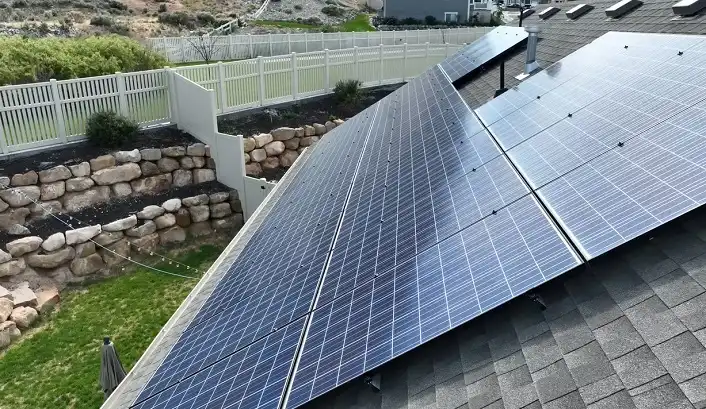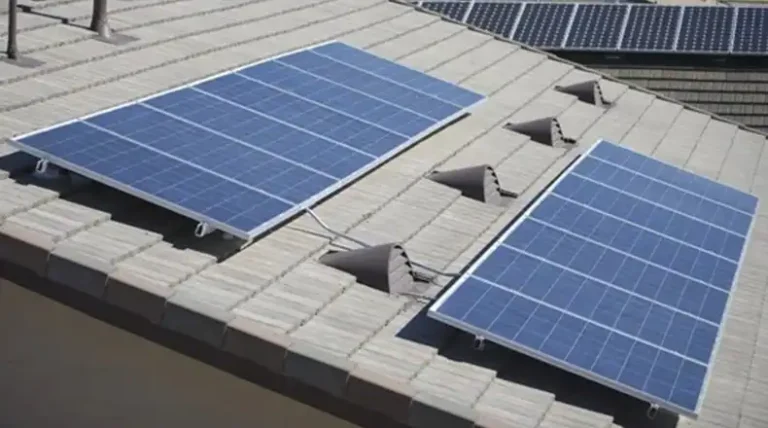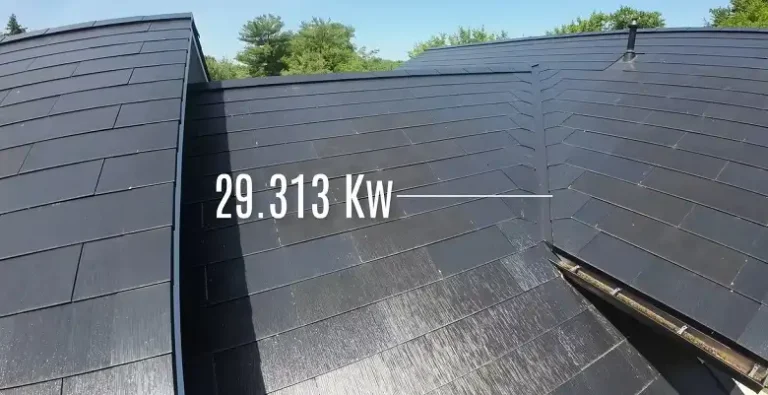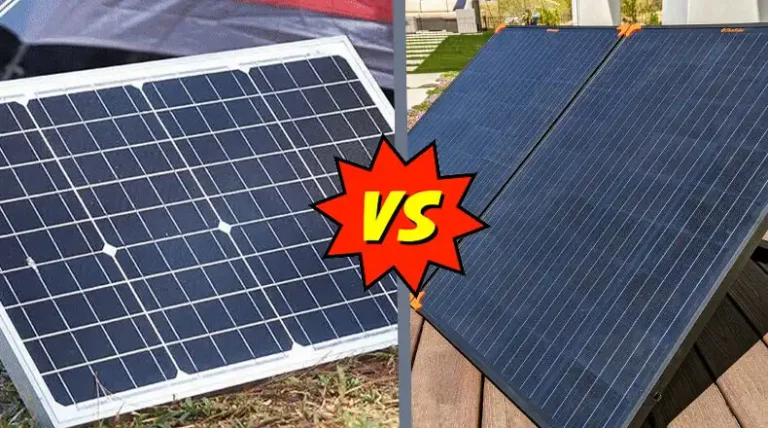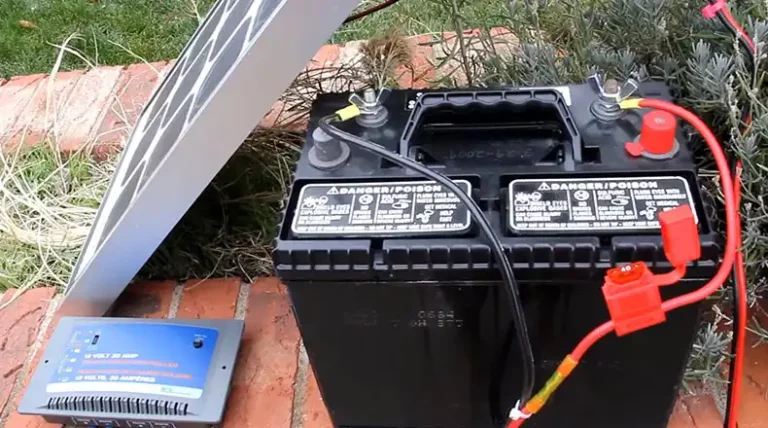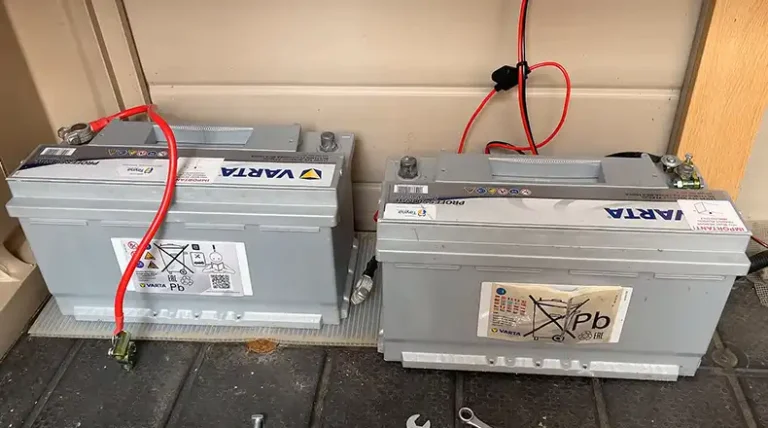How to Clean Solar Panels from the Ground (There are 3+ Methods)
Keeping solar panels clean is essential for their efficient functioning. However, solar installations on rooftops or raised structures pose significant challenges for cleaning. The dangers and difficulties of climbing heights make frequent manual cleaning impractical.
Cleaning solar panels from the ground requires specialized tools like telescopic poles, soft brushes, squeegees on poles, and high-pressure sprayers with long hoses. With the right equipment, technique, and cleaning solutions, you can easily maintain clean solar panels in a safe manner from the ground.
If you want to clean your solar panels from the ground then you’re not alone who’s thinking about this for the first time. I already have done this and got a satisfactory result. So, here I’m gonna share the method I used to clean my solar panels. Let’s explore how to clean your solar panels from the ground.
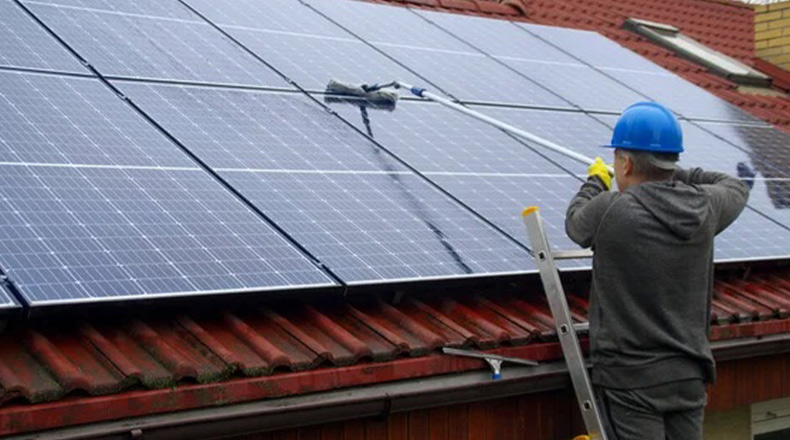
Methods to Clean Solar Panels from the Ground
Cleaning solar panels from the ground requires equipment with adequate height and range to reach the solar array. The four main methods of cleaning from the ground are:
- Using telescopic poles and brushes.
- Pressure washing with specialist equipment.
- Installing automated robotic solar panel cleaners.
- Hiring professional solar panel cleaning services.
Each approach has its own advantages and considerations which will be explored in depth in this article. By using the most appropriate techniques and tools for your specific solar panel installation, upkeep can be performed safely, quickly, and efficiently from ground level.
Method 1: Using Telescopic Poles for Solar Panel Cleaning
Telescopic poles with brush attachments provide a safe and effective means to clean solar panels from the ground. The key steps to using this technique are:
Step 1: Select the Appropriate Pole Height
- For a single-story building, 20-30 ft. poles suffice
- Commercial rooftop arrays need 40-50 ft. poles
- Second-story residential solar needs 35-45 ft. poles
Step 2: Use Soft Nylon or Natural Fiber Brushes
Avoid stiff brushes that could scratch panel surfaces. Soft brush materials like bassine prevent abrasion.
Step 3: Handle Poles Securely to Prevent Toppling Over
Set up trestles or tripods and rest the bottom end of the pole securely to avoid falling when extended upwards.
Step 4: Use Distilled or Deionized Water to Clean
Avoid tap water with minerals that leave water spots. Use squeegees to wipe panels dry after wet brushing.
Step 5: Scrub Panels Gently in a Horizontal Motion
Repeated gentle brushing lifts dust and yellowed organic contamination of the glass.
Well-designed telescopic poles like the Ecoppia P40 allow coverage of over 2000 sq. ft per hour, enabling rapid cleaning of even large commercial solar arrays from the ground.
Method 2: Cleaning Solar Panels with Pressure Washers
High-pressure washers can also effectively clean solar panels from ground level. Key aspects to consider:
Step 1: Use Specialist Solar Cleaning Pressure Washers
General washers can damage panels. Solar-optimized models like INTEGREX Cuda provide controlled cleaning.
Step 2: Restrict Pressure to Below 1500 psi
Standard pressure washers exceed the fragile glass and aluminum panel capacity. The specialist kit uses lower pressures and optimized angles.
Step 3: Ensure Nozzle-to-Panel distance of at least 1 ft
Appropriate working distance avoids panel surface damage while delivering sufficient spray contact.
Step 4: Heated Water Under 149°F (65°C) is Best
Warmer water increases cleaning efficiency. But limit temperature to prevent thermal shock cracking glass.
Step 5: Scrub Tough Stains Before Pressure Washing
Agitate persistent accumulated grime with soft brushes first to avoid spray abrasion.
Step 6: Wipe Panels Fully Dry and Inspect After Cleaning
Leave no water droplets or residues. Check panel integrity for cracks or moisture ingress.{.h3}
According to NEXTracker field trials, optimized pressure washing increased solar output by 30% for large-scale arrays with heavy soiling.
Method 3: Robotic Solar Panel Cleaning Solutions
Sophisticated robotic solar panel cleaning rigs automate the cleaning process for consistent maintenance. Noteworthy aspects include:
Step 1: Automated Operation Reduces Labor Cost
After basic programming, robots handle cleaning independently without ongoing staffing requirements.
Step 2: Special Brushes Fit Panel Contours
Custom brush shapes follow the curves of panels for thorough cleaning coverage.
Step 3: Onboard Tanks Store Water and Detergents
Carrying cleaning fluids allows for self-contained function without requiring external provision after deployment.
Step 4: Remote Monitoring and Management
Centralized control systems track operations, optimize cleaning routes, detect faults etc.
Step 5: Fast Charging For Continuous Working
Rapid juicing up during brief pauses maximizes active cleaning time for the robots.
According to Ecoppia, optimized robotic solar panel cleaning outperforms manual methods by 200% in operational efficiency.
Method 4: Hiring Professional Solar Panel Cleaning Services
Another alternative to tackle ground-level cleaning is outsourcing the job to specialized professional solar panel cleaning companies. Useful points:
Step 1: Fully Equipped for Working at Heights
Pro cleaners invest in customized equipment like scissor lifts, harness gear and specialized tools tailored for effectively washing solar installations.
Step 2: Compliance with Safety Regulations
Staff are extensively trained on work-at-height protocols for risk-free panel cleaning compliant with legal OH&S obligations.
Step 3: Higher Quality of Work Compared to Casual Labor
Specialist firms develop expertise through regular solar cleaning practices delivering superior results.
Step 4: Flexibility to Schedule Periodic Visits
Agree on optimal repeating cleaning cycles for the conditions of your locality with minimal disruption.
As per industry estimates, professional solar panel cleaning can enhance system output by 20-25%, in some instances going up as high as 40%.
Method 5: DIY Solar Panel Cleaning from the Ground
For small home solar installations, DIY cleaning with basic equipment is an affordable maintenance solution. Useful guidelines:
Step 1: Use Telescopic Poles and Soft Brushes
Invest in good quality gear for maximizing reach without surface abrasion.
Step 2: Restrict Water Flows to Avoid Runoff Drips
Prevent leaks through panel joints – conduits into the building could cause internal water damage.
Step 3: Apply Suitable Cleaning Agents
Use sprays formulated for solar glass like Straytner Ultra or Palmolive gel.
Step 4: Allow Adequate Drying Time
Let panels fully dry before resuming charging activity to electrical circuits.
Step 5: Repeat Cleaning Every Month
Schedule DIY care frequently for satisfactory dust removal and functioning.
With due precautions, DIY cleaning provides reasonably good solar panel maintenance at low costs for residential owners.
Comparative Analysis of Ground-Based Solar Panel Cleaning Methods
| Cleaning Method | Cost | Safety | Degree of Cleaning | Frequency Achievable |
| Telescopic Pole Brushing | Low | High | Moderate | Monthly |
| Specialist Pressure Washing | Moderate | Depends on training/equipment | High | Quarterly/Biannual |
| Robotic Cleaning | High equipment cost offset by low labor | Removes human height risk | Highest consistency in cleaning quality | Fully flexible cycles – even daily |
| Professional Cleaning Service | Moderate. Includes expert staff, gear | Highly trained for access hazards | Very effective skilled work | Customizable service cycles |
| DIY Cleaning | Low-cost equipment. Involves personal effort | Risk of falls without safety protocol | Varies based on method expertise | As frequently as feasible for the homeowner |
This comparative assessment helps evaluate the most suitable cleaning approach based on budget, quality needs and safety considerations.
As evidently shown, each methodology has relative merits. Robotic systems deliver the highest consistency in cleaning quality through pre-programmable automated operation. However, pressure washing and professional cleaning also provide very effective periodic maintenance at more affordable costs.
With the fundamentals of solar panel cleaning from the ground established, we will now address some frequent doubts that arise on implementing these solutions.
Why it is Essential to Keep Solar Panels Clean
Before delving into ground-based solar panel cleaning methodology, it’s important to understand why regular cleaning is crucial for solar PV systems. There are several key reasons:
- Accumulation of Dust, Soil, and Pollen Reduces Solar Absorption: Airborne particles that settle on the glass reduce light penetration to the solar cells. Studies show losses of over 50% efficiency on polluted panels.
- Droppings from Birds, Leaves, and Tree Sap Block Sunlight: Natural debris over time increasingly obstructs sunlight access to panels, cutting electrical output.
- Mud and Rainwater Residue Builds Up: Soil and mineral deposits from water run-off also hinder solar absorption, necessitating occasional deep cleaning.
- Cleaning Prevents Long-Term Panel Damage: Dirt, grime, bird droppings, and residues could potentially stain, corrode, or scratch solar panels if not washed off regularly.
Keeping solar arrays meticulously clean with periodic maintenance preserves their integrity and productivity over decades of usage.
- Falling Efficiency Directly Reduces Electricity Generation: As the deposition of solids prevents sunlight from being converted into current, panel output keeps falling. This cuts the self-consumption of solar power or sales to the electrical utility provider.
Frequent solar panel cleaning boosts electricity generation by 15-25%, providing increased revenues and environmental benefits.
The next sections provide practical solutions to handle cleaning entirely from ground level.
Other Related Queries
Does Ground Cleaning Actually Reach All Solar Panels?
Yes, with properly selected tools – specialized telescopic poles for brushing extend to heights like 50 feet allowing safe cleaning access. Custom pressure washers also have long hoses and optimized lance positioning for cleaning elevated panels without climbing or lifting gear. Robotic cleaners and professional services use customized rigs ensuring panel coverage.
Can Inadequate Cleaning Cause Damage?
Harsh scrubbing or high-pressure spraying could potentially damage solar panels, especially if done without requisite care. To prevent abrasion or cracked glass, use ultra-soft brushes, restricted low pressure, and optimal temperature settings when pressure washing.} Robotic cleaners and professional services are specifically customized to avoid panel damage during cleaning.
Is Dry Cleaning With Brushes Enough?
For light dust, dry brushing alone may suffice. But for weathered grimy panels with months of exposure, wet cleaning loosens tough stains more effectively. Water also helps capture removed particulates to prevent resettling. The key is fully drying panels after wet cleaning using squeegees or moisture scavenging techniques.
Can Ground Cleaning Replace Manual Rooftop Methods?
Yes, specialized poles, pressure washers, robots, and expert services can clean solar panels installed at heights without needing manual scrubbing. Advanced equipment with telescopic reach makes ground cleaning safer and more convenient than direct manual methods done repetitively.
Why Should Cleaning Be Done Frequently?
Solar panels get rapidly soiled again after cleaning. Dust, pollen, leaves, and bird droppings re-accumulate compromising efficiency. More frequent cleaning improves energy yield through consistently cleaner panels exposed to sunlight. Robotic cleaners allow the greatest flexibility for regular maintenance cycles.
Wrapping Up
As elaborated in this article, cleaning solar panels entirely from the ground using specialized tools and techniques eliminates safety risks while enabling convenient, frequent, and effective cleaning for optimum solar panel performance. The key options for ground-based cleaning are – telescopic poles, customized pressure washing rigs, automated robotic systems, and scheduled professional cleaning contracts. Each approach has relative merits and considerations for costs, safety, quality, and frequency of repetitive cleaning. Have additional questions on planning or executing your solar panel cleaning regimen? Please leave them in the comments – happy to address any related queries!

